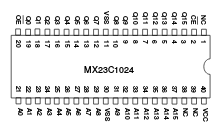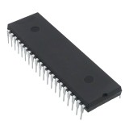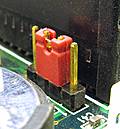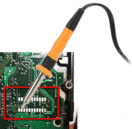Dates and Events:
|
OSADL Articles:
2023-11-12 12:00
Open Source License Obligations Checklists even better nowImport the checklists to other tools, create context diffs and merged lists
2022-07-11 12:00
Call for participation in phase #4 of Open Source OPC UA open62541 support projectLetter of Intent fulfills wish list from recent survey
2022-01-13 12:00
Phase #3 of OSADL project on OPC UA PubSub over TSN successfully completedAnother important milestone on the way to interoperable Open Source real-time Ethernet has been reached
2021-02-09 12:00
Open Source OPC UA PubSub over TSN project phase #3 launchedLetter of Intent with call for participation is now available |
Case 1 - Installing own software versions (Installation eigener Software-Versionen)
A machine builder supplies along with the machine the following Open Source licensed software components in binary form:
- Das U-Boot GPL-2.0
- Linux kernel GPL-2.0
- GNU C library LGPL-2.1
- Busybox, GPL-2.0
The bootloader “Das U-Boot” can be copied using a Z-modem protocol to the appropriate partition of the flash memory via a serial interface controller that is available in the customer’s machine.
Variants
Variant a)
A special login is provided to upload a new version of the bootloader, but the machine builder refuses to disclose the required username/password combination to the customer. Can the manufacturer refuse?
Answer a)
(Please note that this and the following answers are only accessible when logged in as OSADL member.)
Variant b)
This variant also uses a password-protected login. But the machine builder has participated in OSADL eG’s SIL2LinuxMP project and has obtained a SIL2 certificate for the machine from the German Safety Standards Authority TÜV Rheinland. He now refuses to disclose the required username/password combination to the customer with the argument that this is forbidden by the TÜV. Is this correct?
Answer b)
Variant c)
Source code, which can be provided as an option under GPL-3.0, has been used exclusively for producing the bootloader “Das U-Boot”. The machine builder’s software service provider, which has supplied “Das U-Boot”, has therefore granted a license under GPL-3.0. Once again uploading the software to the target is protected by password, and the machine builder refuses to disclose the required username/password combination to the customer. Can the manufacturer now refuse? If he cannot refuse for variant a) and c), is there actually a difference?
Answer c)
Variant d)
No username/password combination is required in this variant, but now it is not possible to write to the appropriate partition of the flash memory due to the lack of a short-circuit bridge (a so-called jumper) which the manufacturer removed before release of the machine and did not document. However, the customer assumes that there must be such a jumper (as the machine builder must somehow have been able to write to the memory when the machine was manufactured) and also finds several suitable pin pairs on the circuit board. However, the machine builder denies this fact and does not make the appropriate documentation available. The customer threatens legal action. How might this turn out?
Answer d)
Variant e)
To rewrite the appropriate partition of the flash memory is no longer impossible because of a lacking jumper documentation, but undocumented copper pads on the printed circuit board are not connected. Applying an electrical connection between the two pads with a soldering iron would be needed to enable rewriting to the flash memory. However, the customer does not know this and the machine builder does not tell the customer – even after several requests. Coincidently, the customer later obtains a copy of the circuit diagram and establishes that it would have been possible to quickly and easily copy his own version of the bootloader “Das U-Boot” to the machine by applying a solder bridge between the two pads. As the customer did not know this, he has incurred considerable losses. Is he justified in hoping that the machine builder will compensate him for these losses?
Answer e)
Variant f)
Rewriting the appropriate partition of the flash memory is not possible, as the serial controller has been made mechanically unusable at the end of the manufacturing process so even the manufacturer is no longer able to write to the boot partition of the flash memory. In this case too, the customer learns of this and requests the manufacturer to provide him with an original version of the circuit board to enable him to copy his own version of the boot loader “Das U-Boot” to the machine. Does the machine builder have to provide this circuit board? If yes, can he ask for payment?
Answer f)
Variant g)

- Circuit of a mask
programmable ROM
(MX23X1024)

- External view of a
mask programmable
ROM
In contrast to all previous variants, the boot loader “Das U-Boot” is now stored in a mask-programmed ROM which cannot be unsoldered or otherwise replaced. However, the customer categorically wants to copy his own version of the bootloader “Das U-Boot” to the machine. Does he have to abandon this requirement? Or can he force the machine builder to accommodate his changes in the next version of the ROM so that this would then be available – possibly as an option?
Answer g)






